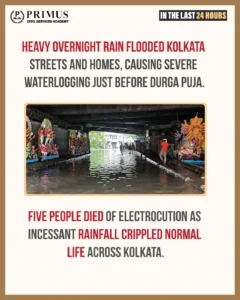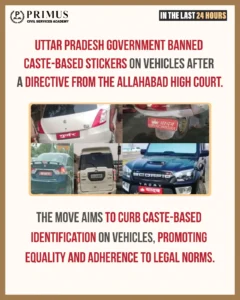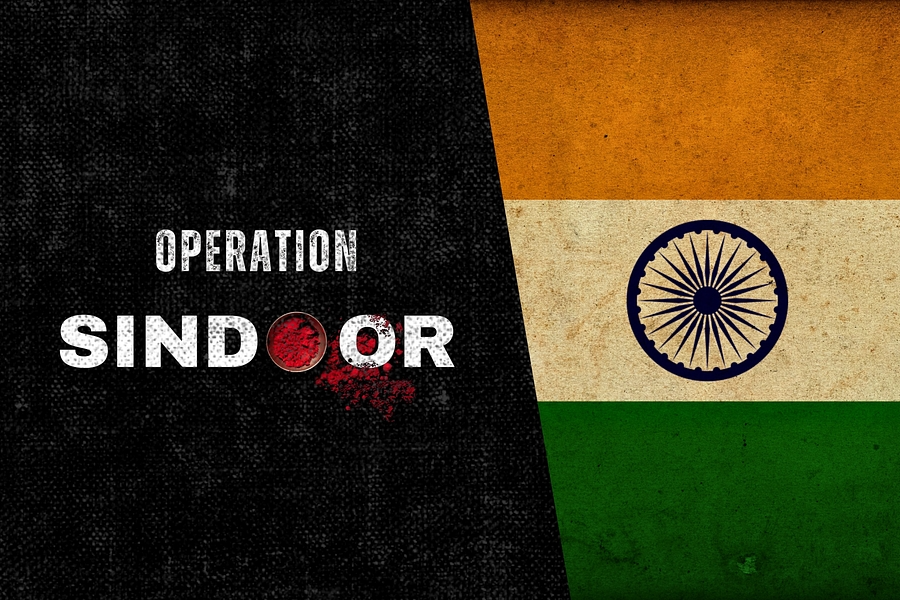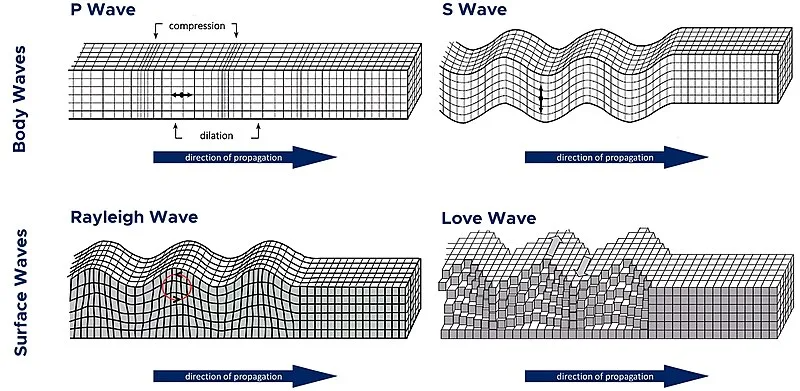September 23rd Current Affairs
Table of Contents
Kannada Literature Optional Syllabus
Home / ಐಚ್ಚಿಕ ಕನ್ನಡ ಸಾಹಿತ್ಯದ ಪಠ್ಯಕ್ರಮ ಐಚ್ಚಿಕ ಕನ್ನಡ ಸಾಹಿತ್ಯ ಪತ್ರಿಕೆ – 1 ವಿಭಾಗ – ಎ ಅ) ಕನ್ನಡ ಭಾಷೆಯ ಚರಿತ್ರೆ ಭಾಷೆ
UPSC Current Affairs – October 6th
October 06th Current Affairs Home / Table of Contents 36-hour curfew imposed in parts of Odisha’s Cuttack over communal tensions
Religious Minorities in India and the Challenge of Communal Harmony: A Sociological Reflection on the Cuttack Violence
Home / Religious Minorities in India and the Challenge of Communal Harmony: A Sociological Reflection on the Cuttack Violence Sociology
UPSC Current Affairs – October 4th
October 04th Current Affairs Home / Table of Contents Isabgol Processors threaten to halt purchases from October 6th over GST
Sologamy and Contemporary Trends in Marriage: A Sociological Perspective
Home / Sologamy and Contemporary Trends in Marriage: A Sociological Perspective Sociology Paper 1: Systems of Kinship – Contemporary trends
UPSC Current Affairs – October 3rd
October 03rd Current Affairs Home / Table of Contents NASA IMAP to show how solar particles are energised and shield
Understanding Indian Festivals through Durkheim: Religion, Rituals, and Collective Conscience
Home / Understanding Indian Festivals through Durkheim: Religion, Rituals, and Collective Conscience Sociology Paper 1: Émile Durkheim – Religion and
UPSC Current Affairs – September 30th
September 30th Current Affairs Home / Table of Contents Ladakh groups reject talks with government, Ministry says open to dialogue
Caste Census in India: A Sociological Perspective
Home / Caste Census in India: A Sociological Perspective Sociology Paper 2: Caste System – Features of Caste system. The
Constitutional Morality: Upholding India’s Democratic Ethos
Home / Constitutional Morality: Upholding India’s Democratic Ethos Sociology Paper 2: Visions of Social Change in India – Constitution, law,
Rain cripples Kolkata ahead of Durga Puja, streets flooded, 5 die of electrocution

Relevance to UPSC
GS Paper I: Geography
- Illustrates impact of extreme weather events (heavy rainfall, flooding) due to changing climatic patterns — relevant for topics like Climate Change, Monsoons, Natural Disasters.
- The formation of low-pressure systems over the Bay of Bengal and their influence on regional weather ties into Indian meteorology and disaster forecasting.
GS Paper III: Disaster Management, Disaster Resillient Infrastructure
- Highlights urban infrastructure vulnerabilities (drainage, pumping capacity, metro / railway resilience) during floods; significant for disaster mitigation and urban planning.
- Raises questions about early warning systems, preparedness of city authorities for natural disasters, and inter-agency coordination when public transport (metro, trains) gets disrupted.
More About the News
- Kolkata experienced record heavy rainfall, with areas like Garia Kamdahari and Jodhpur Park getting over 250-330 mm in a few hours, leading to widespread waterlogging.
- Five people died of electrocution, water entered many residential complexes. Metro and suburban train services were disrupted; many festivals/Puja market preparations affected.
- Forecasts say rain will continue, due to low pressure over the northeast Bay of Bengal; authorities are pumping water and trying to restore disrupted transport services.
Urban Flooding
Urban flooding is the inundation of low-lying areas in cities caused by heavy rainfall, inadequate drainage, and rapid urbanization. It has become a growing concern in India due to climate change, unplanned urban growth, and encroachment of natural water bodies. Addressing it requires integrated urban planning, resilient infrastructure, and community participation.
Causes of Urban Flooding
- Rapid Urbanization & Impervious Surfaces: Expansion of concrete surfaces prevents water absorption. Example: Mumbai’s slum areas and high-rises.
- Encroachment of Water Bodies / Wetlands: Loss of lakes, ponds, and canals reduces natural drainage. Example: Chennai’s Buckingham Canal.
- Poor Drainage & Sewage Systems: Old, clogged, or insufficient drains cannot handle high rainfall. Example: Kolkata metro waterlogging during 2025 monsoon.
- Extreme Weather Events / Climate Change: Increasing frequency of intense rainfall. Example: Mumbai 2005, Chennai 2015 floods.
- Deforestation & Soil Sealing in Catchment Areas: Reduced infiltration in upstream areas increases runoff into cities. Example: Pune region.
Impacts of Urban Flooding
Loss of Life and Health Hazards: Electrocutions, waterborne diseases.
Example: 2025 Kolkata floods caused 5 deaths.Property Damage: Flooding of homes, commercial buildings, vehicles.
Example: Mumbai 2021 monsoon losses >₹1,000 crore.Disruption of Transport: Waterlogging of roads, metro and railway systems halted.
Example: Delhi metro was affected due to heavy rains in 2023.Economic Loss / Business Disruption: Loss of business hours, markets, and industrial activity.
Example: Chennai floods 2015 affected IT parks.Environmental Degradation: Contamination of water bodies, sewage overflow, and soil erosion.
Example: Pune rivers polluted during monsoon floods.
Challenges in Curbing Urban Flooding
- Encroachment & Unauthorized Construction: Wetlands and natural drains are blocked by illegal structures.( Bengaluru).
- Aging Infrastructure: Outdated drainage networks unable to handle high-intensity rainfall ( Kolkata).
- Lack of Integrated Urban Planning: No coordination between municipal, state, and environmental authorities (Mumbai).
- Inadequate Early Warning Systems: Citizens often unaware of approaching floods (Chennai 2015).
- Limited Funding & Maintenance: Insufficient budget for modern pumping stations and stormwater drains (Patna).
Government Measures Taken
- National Disaster Management Authority (NDMA) Guidelines on urban flood management.
- Smart Cities Mission incorporating flood-resilient infrastructure (stormwater drains, rainwater harvesting).
- Metro cities upgrading drainage systems (Mumbai, Delhi, Chennai).
- Interlinking of rivers and creation of retention basins in flood-prone urban areas.
Best Practices
India:
- Ahmedabad: Flood Early Warning System using rain gauges and IoT sensors.
- Pune: Construction of check dams and retention ponds to reduce urban runoff.
Global:
- Rotterdam, Netherlands: “Water plazas” and adaptive streets that temporarily store stormwater.
- Tokyo, Japan: Underground flood diversion tunnels like the Metropolitan Area Outer Underground Discharge Channel.
Way Forward
- Promote green infrastructure: rain gardens, permeable pavements.
- Strengthen urban planning and enforcement to prevent encroachment of water bodies.
- Improve early warning systems using AI and satellite data.
- Encourage community awareness and participatory flood management.
- Integrate climate-resilient infrastructure in all urban development projects.
Urban flooding is a growing threat due to climate change and unplanned development. With proactive governance, resilient infrastructure, and community participation, cities can reduce vulnerability. Future urban planning must integrate sustainable water management and disaster preparedness to ensure safer, livable cities.
Prelims MCQ
Q. Which of the following measures effectively reduces urban flooding risk?
A. Increasing impervious surfaces in urban areas
B. Restoring wetlands and natural drainage channels
C. Building roads on floodplains
D. Removing stormwater drains
Mains Question
Q. Urban flooding in India is not merely a result of heavy rainfall but also of unplanned urbanization and governance gaps. Critically examine the causes, impacts, and measures to mitigate urban flooding, citing relevant examples.
Inderjit Singh Gosal, the man who took over from Nijjar, is held in Canada

Relevance to UPSC
GS Paper II: International Relations
- The arrest of a Khalistani activist in Canada highlights issues of transnational terrorism, foreign policy, extradition, and diplomatic engagement.
- Raises questions about how democracies deal with citizens or residents who promote secessionist agendas from abroad, balancing human rights vs national security.
GS Paper III: Security, Terrorism & Law Enforcement
- Tensions between domestic and foreign law enforcement in counter-terrorism.
- Shows how organizations like Sikhs for Justice and Babbar Khalsa International are treated under Indian and international law (terror designations, sanctions).
More About the News
- Inderjit Singh Gosal, who took over India’s “Khalistan referendum” campaign after Hardeep Singh Nijjar’s killing, was arrested in Canada on multiple firearms charges.
- He is said to be a coordinator for Sikhs for Justice, with links to the declared terror outfit Babbar Khalsa International, and had been involved in a temple violence case in Toronto.
- His arrest follows recent talks between Indian and Canadian national security advisors, and signals a shift from Canada’s earlier approach to pro-Khalistan activities
The Khalistan Issue
The Khalistan movement is a separatist campaign advocating for an independent Sikh state, Khalistan, primarily in the Indian state of Punjab. While the movement has largely subsided within India, it continues to influence diaspora communities, particularly in Canada, affecting bilateral relations and raising security concerns.
Evolution and Background
- 1970s–1980s: The movement gained momentum due to perceived marginalization of Sikhs and the rise of leaders like Jarnail Singh Bhindranwale.
- 1984: Operation Blue Star aimed to remove Bhindranwale from the Golden Temple, leading to widespread unrest and the assassination of Prime Minister Indira Gandhi.
- Post-1984: The Indian government intensified counterinsurgency operations, leading to the decline of the movement within India.
- Diaspora Influence: Sikh communities abroad, especially in Canada, continued to support the movement, leading to tensions with India.
Key Events
- 1984 Operation Blue Star: Military action to remove militants from the Golden Temple, resulting in significant casualties and damage.
- 1986 Hoshiarpur Bus Massacre: Khalistani militants killed 24 Hindu passengers, highlighting the movement’s violent phase.
- 2023 Assassination of Hardeep Singh Nijjar: A prominent pro-Khalistan activist was killed in Canada, escalating tensions between India and Canada.
- 2025 Arrest of Inderjit Singh Gosal: A key figure in the Khalistan Referendum campaign was arrested in Canada on firearms charges, indicating increased scrutiny of separatist activities.
Causes of the Movement
- Religious and Cultural Identity: Desire to preserve Sikh traditions and autonomy.
- Political Marginalization: Perceived underrepresentation and discrimination of Sikhs in political processes.
- Historical Grievances: Memories of events like Operation Blue Star and the 1984 anti-Sikh riots.
- Diaspora Influence: Support from Sikh communities abroad, providing resources and platforms.
- External Support: Alleged backing from foreign entities, including Pakistan’s ISI, to destabilize India.
Impacts on India's Security
- Terrorism: Incidents like the Hoshiarpur bus massacre exemplify the movement’s violent phase.
- Cross-Border Terrorism: Alleged support from Pakistan’s ISI to Khalistani militants.
- Internal Unrest: Protests and clashes, especially in Punjab, disrupting peace.
- Diplomatic Strains: Tensions with countries hosting Khalistani sympathizers, notably Canada.
- Radicalization: Influence on youth, leading to recruitment for militant activities.
Challenges in Containing the Movement
- Diaspora Support: Sikh communities abroad providing moral and financial backing.
- Freedom of Expression: Balancing counterterrorism efforts with protecting civil liberties.
- Diplomatic Sensitivities: Navigating relations with countries like Canada that have significant Sikh populations.
- Radicalization: Preventing the spread of extremist ideologies among youth.
- Intelligence Gaps: Difficulty in monitoring and infiltrating transnational networks.
Role of India-Canada Ties
- Diplomatic Engagement: Regular dialogues to address concerns and enhance cooperation.
- Intelligence Sharing: Collaborative efforts to monitor and counteract extremist activities.
- Community Outreach: Engaging with Sikh communities to promote integration and counter radicalization.
- Legal Actions: Joint initiatives to address the activities of banned organizations like Sikhs for Justice.
Way Forward
- Enhanced Intelligence Cooperation: Strengthening information-sharing mechanisms between India and Canada.
- Community Engagement: Initiating programs to integrate Sikh youth and prevent radicalization.
- Diplomatic Initiatives: Continued dialogues to address concerns and build trust.
- Legal Frameworks: Developing laws to address the activities of foreign-based extremist groups.
- Public Awareness: Campaigns to educate the public about the dangers of extremism and the importance of unity.
The Khalistan movement, while largely dormant in India, continues to influence diaspora communities, particularly in Canada. Addressing this issue requires a multifaceted approach, combining diplomatic efforts, community engagement, and robust security measures. A collaborative and proactive strategy will be essential to mitigate the movement’s impact on bilateral relations and national security.
Prelims MCQ
Q. Which of the following events significantly contributed to the escalation of the Khalistan movement in the 1980s?
A. Operation Blue Star
B. Assassination of Indira Gandhi
C. Hoshiarpur Bus Massacre
D. All of the above
Mains Question
Q. Discuss the evolution of the Khalistan movement and analyze the challenges it poses to India’s national security and diplomatic relations, particularly with Canada. Suggest measures to address these challenges effectively.
Delhi’s biggest ‘digital arrest’ fraud: Rs 22.92 crore stolen, split in 7 layers via 4,236 transactions

Relevance to UPSC
GS Paper III: Internal Security, Cybercrime & Banking Regulation
- Highlights the complexity of financial frauds — “layering” of transactions over thousands of entries makes detection & prosecution difficult.
- Shows importance of financial intelligence units, supervision of banks, and monitoring large or suspicious transactions across states.
- Underlines challenge of “digital arrest” style coercion, where emotional/psychological manipulation is used to extort money from even well-informed individuals.
GS Paper IV: Ethics
- Ethical issues: abuse of authority, psychological coercion, trust in institutions.
More About the News
- Retired banker Naresh Malhotra was defrauded of ₹22.92 crore over six weeks by scammers posing as officials from ED / Mumbai Police.
- The fraud involved 21 RTGS transfers from 3 banks to 16 different branches, with the stolen money moved in seven layers via 4,236 transactions.
- Only about ₹2.67 crore have been frozen so far; the case underscores the difficulty in detecting or stopping such layered financial frauds.
Digital Arrest
The “Digital Arrest” scam is a sophisticated cybercrime where fraudsters impersonate law enforcement officials to intimidate victims into transferring money. Utilizing digital platforms like video calls and messaging apps, scammers create a false sense of legal jeopardy to exploit individuals financially.
Evolution and Background
- Emergence: The scam began gaining prominence in 2023, leveraging the increasing reliance on digital communication platforms.
- Tactics: Scammers employ high-pressure tactics, including threats of arrest and legal action, to coerce victims.
- Target Demographics: Initially targeting elderly individuals, the scam has expanded to affect a broader age range.
- Global Reach: While originating in India, reports have surfaced in other countries, indicating a transnational threat.
- Law Enforcement Response: Authorities have initiated awareness campaigns and set up dedicated cybercrime units to combat the scam.
Key Trends and Data Points
- Increase in Incidents: Over 92,000 cases reported in India in 2024, with losses exceeding ₹2,000 crore.
- Geographical Spread: Scams have been reported across various states, with significant incidents in Delhi, Bengaluru, and Kanpur.
- Victim Profile: Predominantly affects individuals aged 50 and above, though younger demographics are increasingly targeted.
- International Operations: Scammers often operate from countries like Myanmar, Cambodia, and Laos, complicating law enforcement efforts.
- Law Enforcement Challenges: Delayed reporting and lack of digital evidence hinder timely interventions.
Features and Forms
- Impersonation: Scammers pose as officials from agencies like the ED, CBI, or local police.
- Digital Presence: Utilization of video calls, fake documents, and cloned websites to establish credibility.
- Coercion: Victims are pressured into transferring funds to avoid fabricated legal consequences.
- Layering of Transactions: Stolen funds are moved through multiple accounts to obfuscate the money trail.
- Emotional Manipulation: Scammers exploit victims’ fears and emotions to facilitate compliance.
Causes of the Scam
- Lack of Digital Literacy: Many individuals are unaware of digital fraud tactics, making them susceptible.
- Trust in Authority: Impersonation of officials exploits the inherent trust people have in law enforcement.
- Technological Advancements: Easy access to digital tools enables scammers to execute complex schemes.
- Inadequate Cybersecurity Measures: Weaknesses in digital platforms and banking systems are exploited by fraudsters.
- Delayed Reporting: Victims often hesitate to report incidents promptly, allowing scammers to dissipate funds.
Impacts of it
- Financial Losses: Victims suffer significant monetary losses, impacting their savings and financial stability.
- Emotional Distress: The scam causes anxiety, depression, and in severe cases, suicidal tendencies.
- Erosion of Trust: Public confidence in digital platforms and law enforcement agencies diminishes.
- Strain on Law Enforcement: Authorities face challenges in tracking and apprehending international perpetrators.
- Legal Complications: The complexity of cases complicates legal proceedings and justice delivery.
Challenges in Curbing the Scam
- Jurisdictional Issues: Cross-border operations complicate legal actions and extradition processes.
- Anonymity of Scammers: Use of VPNs and encrypted communication tools hinders identification.
- Victim Reluctance: Fear of embarrassment prevents victims from reporting incidents promptly.
- Resource Constraints: Limited resources and manpower impede comprehensive investigations.
- Technological Sophistication: Advancements in technology outpace law enforcement capabilities.
Government Measures Taken
- Cybercrime Awareness Campaigns: Initiatives to educate the public about digital fraud and preventive measures.
- Strengthening Cyber Laws: Enhancements to existing laws to address emerging cyber threats.
- International Cooperation: Collaborations with foreign agencies to tackle cross-border cybercrime.
- Establishment of Cyber Cells: Dedicated units to handle cybercrime cases and investigations.
- Public Reporting Platforms: Development of portals for citizens to report cybercrime incidents.
Best Practices
India:
- Cyber Awareness Programs: Implementation of educational programs in schools and communities to promote digital literacy.
- Digital Fraud Helplines: Establishment of dedicated helplines for reporting cyber fraud incidents.
Global:
- Public Awareness Campaigns: Countries like the UK have launched nationwide campaigns to educate citizens about digital scams.
- International Cybersecurity Alliances: Nations collaborate through organizations like INTERPOL to combat global cyber threats.
Way Forward
- Enhanced Digital Literacy: Promote education on digital safety and fraud prevention.
- Strengthening Cyber Laws: Update legal frameworks to address evolving cybercrime tactics.
- International Collaboration: Foster cooperation between nations to tackle cross-border cyber threats.
- Technological Advancements: Invest in advanced technologies for cybercrime detection and prevention.
- Public Engagement: Encourage citizens to report incidents promptly and participate in awareness programs.
The Digital Arrest scam represents a significant threat in the digital age, exploiting individuals’ trust and lack of awareness. A multi-faceted approach involving education, legal reforms, and international cooperation is essential to combat this growing menace. Proactive measures can mitigate the impact and protect citizens from such cyber threats.
Prelims MCQ
Q. Which of the following is a characteristic feature of the "Digital Arrest" scam?
A. Scammers impersonate law enforcement officials through digital platforms.
B. Victims are coerced into transferring funds to avoid fabricated legal consequences.
C. The scam primarily targets elderly individuals.
D. All of the above.
The Digital Arrest scam involves scammers impersonating law enforcement officials, coercing victims into transferring funds, and primarily targets elderly individuals.
Mains Question
Q. Evaluate the effectiveness of current measures in combating the “Digital Arrest” scam in India and propose comprehensive strategies to address this emerging cyber threat.
The rise of spinal issues among children growing up in the digital era

Relevance to UPSC
GS Paper III — Health, Nutrition & Wellbeing & Impact on Health due to use of Digital Technologies
- Spinal misalignment in children implicates musculoskeletal health, physical activity, sedentary lifestyle, nutrition and related disorders.
- Emphasizes preventive medicine, early diagnosis, orthopaedic intervention, physiotherapy – all part of health systems and primary care.
- Brings up implications of digital era on health: screen exposure, posture, lifestyle, which affect chronic disease risks
More about the News
- Children spending extended hours on phones/tablets often adopt poor posture, hunched shoulders, tilted neck, leading to spinal misalignment and related complications.
- Musculoskeletal experts warn that such misalignment, if not corrected early, can lead to lasting issues, chronic pain, stiffness and mobility problems.
- Key preventive measures suggested include limiting screen time, ensuring ergonomic setups, regular exercise and awareness among parents and schools.
Use of Digital Technology Impacting Health
The integration of digital technology into healthcare, known as digital health, encompasses tools like telemedicine, electronic health records, wearable devices, and AI-driven diagnostics. These innovations aim to enhance accessibility, efficiency, and patient outcomes. However, their rapid adoption presents challenges related to equity, privacy, and infrastructure.
Background and Key Trends
- Telemedicine Expansion: The COVID-19 pandemic accelerated the adoption of telemedicine, enabling remote consultations and reducing healthcare access barriers.
- Wearable Health Devices: Devices like fitness trackers and smartwatches monitor vital signs, promoting proactive health management.
- AI in Diagnostics: Artificial intelligence aids in early disease detection and personalized treatment plans, improving diagnostic accuracy.
- Electronic Health Records (EHRs): Digital records streamline patient information management, enhancing coordination among healthcare providers.
- Mobile Health Applications: Apps facilitate health monitoring, medication reminders, and mental health support, increasing patient engagement.
Positive and Negative Impacts
Positive Impacts | Negative Impacts |
Improved Access to Healthcare: Telemedicine bridges gaps in rural areas. | Data Privacy Concerns: Increased risk of unauthorized access to personal health data. |
Enhanced Disease Monitoring: Wearables provide real-time health tracking. | Digital Divide: Limited access to technology in underserved populations. |
Cost Efficiency: Reduces the need for in-person visits, lowering healthcare costs. | Over-reliance on Technology: Potential for misdiagnosis without human oversight. |
Personalized Treatment: AI analyzes data for tailored healthcare plans. | Mental Health Impacts: Excessive screen time linked to anxiety and depression. |
Increased Patient Engagement: Apps encourage active participation in health management. | Security Risks: Vulnerabilities in digital platforms can lead to cyberattacks. |
Challenges in Containing it’s Ill Effects
- Infrastructure Limitations: Inadequate internet connectivity hampers access to digital health services, especially in rural areas.
- Data Security Issues: Cybersecurity threats pose risks to the confidentiality and integrity of health data.
- Regulatory Gaps: Lack of standardized regulations for digital health technologies leads to inconsistent practices.
- Digital Literacy Deficits: Low digital literacy among certain populations limits the effective use of health technologies.
- Ethical Concerns: AI algorithms may inherit biases, affecting the fairness and equity of healthcare delivery.
Government Measures Taken
- Ayushman Bharat Digital Mission (ABDM): Aims to create a digital health ecosystem by integrating various health services and ensuring accessibility.
- Telemedicine Initiatives: Programs like SEHAT provide teleconsultation services to underserved regions.
- Regulatory Frameworks: Development of policies to ensure data privacy and security in digital health applications.
- Digital Literacy Campaigns: Efforts to educate the public on the use of digital health tools and platforms.
- Infrastructure Development: Enhancing internet connectivity and technological infrastructure to support digital health services.
Best Practices
India:
- Eka Care’s Digitization Efforts: Digitized over 110 million health records, facilitating efficient healthcare delivery.
- CGHS Digital Platform: Introduced PAN-based IDs and online approvals to streamline healthcare services.
Global:
- Estonia’s E-Health System: Implemented a nationwide digital health record system, ensuring seamless healthcare access.
- Singapore’s HealthHub: A centralized platform providing citizens with access to personal health information and services.
Way Forward
- Enhance Digital Infrastructure: Invest in robust internet connectivity to support digital health services.
- Standardize Regulations: Develop comprehensive policies to govern digital health technologies and ensure data security.
- Promote Digital Literacy: Conduct training programs to improve digital skills among healthcare providers and the public.
- Encourage Public-Private Partnerships: Collaborate with private sector entities to innovate and expand digital health solutions.
- Monitor and Evaluate: Regularly assess the impact of digital health initiatives to ensure effectiveness and equity.
The integration of digital technology into healthcare offers significant potential to enhance service delivery and patient outcomes. However, addressing challenges related to infrastructure, security, and equity is crucial for realizing its benefits. A collaborative approach involving government, industry, and communities will be essential to harness the full potential of digital health.
Prelims MCQ
Q. Which of the following initiatives aims to create a digital health ecosystem in India?
A. Ayushman Bharat Digital Mission
B. National Health Mission
C. Digital India Programme
D. Pradhan Mantri Jan Arogya Yojana
The Ayushman Bharat Digital Mission aims to develop an integrated digital health infrastructure in India, facilitating access to healthcare services.
Mains Question
Q. Discuss the challenges and opportunities presented by the integration of digital technology in healthcare, with a focus on the Indian context. How can these challenges be addressed to ensure equitable access to healthcare services?
UP govt bans caste-based mentions, stickers on vehicles following Allahabad High Court directive

Relevance to UPSC
GS Paper I: Social Justice & Social Issues
- The role caste plays in Indian society and how public displays and mentions of caste reinforce social divisions.
- Cultural/social behavior with caste identity, glorification, symbolism and its impact on communal harmony and equal citizenship.
GS Paper II: Polity, Governance & Constitutional Law
- Shows application of constitutional morality, equality, secularism, and non-discrimination and how courts interpret and enforce those values to curb caste identity politics.
- The State’s duty under law to amend official formats and manuals (police FIRs, vehicle rules etc.), reflecting how governance responds to judicial mandates.
- Raises questions about identity profiling, balancing administrative record-keeping vs individual dignity and rights.
More about the News
- The Allahabad High Court ruled that mentions of caste in police FIRs, recovery memos, notice boards, seizures etc. must be deleted, except where legally required (e.g. under the SC/ST Act).
- It directed that caste-based slogans, stickers, or identifiers on private or public vehicles be banned under the Central Motor Vehicles Rules, and that public displays glorifying caste be removed.
- The judgment emphasised that caste glorification undermines constitutional morality, propagates identity profiling, and is “anti-national,” urging a cultural and legal change towards equality.
Caste System in India
The caste system in India is a traditional social stratification mechanism dividing society into hierarchical groups based on birth and occupation. While it historically structured social roles and responsibilities, it also led to social inequalities and discrimination. Despite legal abolition of untouchability, caste continues to influence socio-economic and political dynamics in India.
Evolution of the Caste System in India
- Vedic Period: The Varna system classified society into Brahmins, Kshatriyas, Vaishyas, and Shudras based on occupational duties.
- Post-Vedic/Medieval Period: The Jati system emerged with hundreds of sub-castes defining social and occupational identity.
- Colonial Period: British administration formalized caste classifications for census and governance purposes.
- Post-Independence: The Constitution abolished untouchability (Article 17) and introduced affirmative action policies.
- Modern Era: Caste remains a key factor in politics, social mobility, and access to resources.
Features of the Caste System
- Hereditary: Caste identity is inherited at birth.
- Occupational Specialization: Each caste traditionally linked to specific professions.
- Endogamy: Marriage generally occurs within the same caste.
- Social Hierarchy: Caste groups are ranked, influencing social status and privileges.
- Religious Sanction: Often justified and reinforced through religious texts and beliefs.
Need for a Caste System
- Social Order: Provided a structured framework for roles and duties. Example: Brahmins as priests maintained religious rituals.
- Occupational Continuity: Ensured specialized skills passed through generations. Example: Blacksmith castes produced tools for communities.
- Cultural Identity: Preserved unique traditions and customs of each group. Example: Rajputs retaining martial heritage.
- Community Support: Social networks provided support during crises. Example: Jati-based community funds for weddings and emergencies.
- Political Representation: Caste representation ensured voices of certain groups were acknowledged in councils. Example: Zamindar influence in local governance.
Issues with Caste System
Social Inequality: Lower castes faced systemic discrimination.
Example: Dalits denied temple entry.Limited Mobility: Restricted occupational choices.
Example: Shudras confined to menial jobs.Untouchability: Segregation and social exclusion.
Example: Denial of access to wells and public spaces.Inter-caste Conflicts: Competition over resources led to violence.
Example: Caste riots in Bihar and Uttar Pradesh.Hindrance to Meritocracy: Social status often prioritized over talent.
Example: Certain elite castes monopolizing education and employment opportunities.
Impacts of the Caste System
Economic Disparities: Scheduled Castes and Tribes remain underrepresented in high-income jobs.
Example: Low representation in corporate leadership.Political Dynamics: Caste-based vote banks influence election outcomes.
Example: Mandal Commission politics in 1990s.Educational Inequalities: Marginalized castes have lower literacy rates.
Example: SC/ST literacy gap in rural India.Social Stratification: Maintains hierarchical social structures.
Example: Preference for same-caste interactions in rural villages.Cultural Segregation: Certain customs and festivals remain caste-specific.
Example: Community-specific religious festivals.
Challenges Faced
Eradicating Discrimination: Persistent social biases against Dalits and backward classes.
Example: Manual scavenging still prevalent.Reservation Backlash: Opposition from upper castes regarding affirmative action.
Example: Protests against OBC quotas.Political Manipulation: Caste mobilization for electoral gains can create tensions.
Example: Caste-based alliances and conflicts.Urban-Rural Divide: Caste discrimination persists in rural areas despite urban dilution.
Example: Segregated neighborhoods in villages.Data Limitations: Incomplete caste data hampers policy targeting.
Example: Lack of comprehensive caste census data.
Caste Census
- Purpose: Collect detailed caste-based demographic data to improve policy-making, especially for SC/ST/OBC welfare.
- Latest Effort: India conducted caste enumeration as part of the Socio-Economic and Caste Census (SECC) 2011, with plans for updates under debate.
- Significance: Helps implement affirmative action, reduce inequalities, and target subsidies effectively.
Way Forward
- Promote social awareness and education to reduce caste prejudices.
- Strengthen the implementation of legal safeguards like the Scheduled Castes and Tribes (Prevention of Atrocities) Act.
- Encourage inter-caste marriages and community integration.
- Conduct a comprehensive caste census for better policymaking.
- Empower marginalized groups through skill development and economic opportunities.
The caste system, while historically structuring Indian society, continues to influence socio-economic and political dynamics. Efforts must focus on eradicating discrimination, ensuring equitable opportunities, and promoting social harmony. A balanced approach integrating legal, educational, and social reforms is essential for an inclusive future.
Prelims MCQ
Q. Which Constitutional provision abolishes “untouchability” in India?
A. Article 15
B. Article 17
C. Article 19
D. Article 21
CPI measures consumer goods and services prices and is used by RBI for inflation targeting. Statement 2 is incorrect; MSP is primarily determined by CACP and not CPI-AL.
Mains Question
Q. Examine the evolution of the caste system in India and analyze its continuing socio-economic and political impact. Suggest measures to mitigate caste-based inequalities.




